new posts in all blogs
Viewing: Blog Posts Tagged with: NorthSouth Books, Most Recent at Top [Help]
Results 1 - 9 of 9
How to use this Page
You are viewing the most recent posts tagged with the words: NorthSouth Books in the JacketFlap blog reader. What is a tag? Think of a tag as a keyword or category label. Tags can both help you find posts on JacketFlap.com as well as provide an easy way for you to "remember" and classify posts for later recall. Try adding a tag yourself by clicking "Add a tag" below a post's header. Scroll down through the list of Recent Posts in the left column and click on a post title that sounds interesting. You can view all posts from a specific blog by clicking the Blog name in the right column, or you can click a 'More Posts from this Blog' link in any individual post.

By:
Betsy Bird,
on 1/7/2016
Blog:
A Fuse #8 Production
(
Login to Add to MyJacketFlap)
JacketFlap tags:
Reviews,
Best Books,
funny picture books,
Sebastian Meschenmoser,
German children's books,
translated picture books,
NorthSouth Books,
German imports,
Best Books of 2016,
2016 imports,
2016 picture books,
2016 reviews,
Add a tag
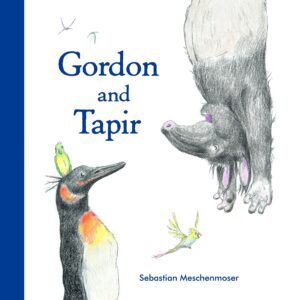 Gordon and Tapir
Gordon and Tapir
By Sebastian Meschenmoser
North/South Books
$18.95
ISBN: 9780735842199
Ages 3-6
On shelves April 1, 2016
There is a perception here in America about the Germans. It is a firm belief that, as a nation, they are devoid of a sense of humor. Americans love to bring this up. I’m not sure what they’re trying to prove necessarily when they say it, but the idea has been repeated so often that few would bother to contest it. Can you name any German stand-up comics? How about funny imported German films? What about funny German picture books? AH HA! There I’ve got you. Because while I cannot pull out of a hat any comics or movies, what I can do is show you without a sliver of a doubt that thanks to picture books like those of Sebastian Meschenmoser, we have absolute proof that Germans have a distinct and ribald sense of humor. With the release of his latest book in the States, Gordon and Tapir, Meschenmoser plumbs the Odd Couple concept with some distinctive twists of his very own. This is some primo German goofball stuff.
The book opens wordlessly. A penguin goes to his restroom with a newspaper. He reaches for the toilet paper. But what is this? Someone’s used it all up. And not just anyone. The penguin, who goes by the name of Gordon, stamps down the hall to his roommate Tapir’s room. Inside he finds the animal reclining in a toilet paper constructed hammock, an elaborate fruit cup in hand and a headdress that would wow Carmen Miranda on his noggin. Immediately Gordon launches into a litany of transgressions Tapir has engaged in. The floor’s sticky with fruit, the dishes are never done, and why exactly has there been a hippo living in the bathtub for the past few days? Tapir isn’t taking this lying down. He has his own complaints, like why does EVERYTHING have to be so neat and tidy? Why does the garbage have to stink of fish all the time? And why can’t Tapir join Gordon’s all-penguin club? Eventually, Gordon moves out and once Tapir discovers this he gives the bird a call. Turns out, it is a fantastic solution. Now Tapir can be dirty, Gordon can be neat, but they can visit each other and be friends again far better than if they lived together. Happy endings for all.
I’ve always carried the torch for Meschenmoser’s art. From his sleepless animals in Waiting for Winter to his previous penguin dip into surrealism in Learning to Fly the man has a strange kinship with the furry and feathery. So much of the character development in these tales comes from their body language. For example, there’s a spread in this book where Gordon lies in bed on his back staring at the ceiling at 3 a.m. while Tapir does much the same thing, albeit blearily, in his own room. This is followed by a silent film of sorts where Gordon finds a new place to stay in the paper and takes off as Tapir hears the door open and looks up with just the saddest expression in his eyes. Any picture book that dares to go silent for an extended amount of time in the center of the story is being gutsy. It’s not easy to pull off, and Meschenmoser ups the ante (as it were) by rendering everything during those wee hours of the morning in black and white graphite sketches.
 Then there are the little visual details and gags. The humor is sublime here. Meschenmoser is just as comfortable with silent gags (remember, this is coming from the man who made Charlie Chaplin references in the images of Mr. Squirrel and the Moon) as he is with words. Some of the jokes are there for the parents doing the reading. Did you notice the tapir in a bathing suit that bedecks the inside bathroom door? Or the fact that when Gordon stomps from the bathroom to Tapir’s room the wallpaper goes from a pristine fish pattern to paper that’s torn and peeling in large chunks? Did you see that the little cactus that Tapir gives to Gordon as a housewarming present is sitting on his dresser earlier in the book? And did you know that every single one of Gordon’s penguin friends is based on a famous author? I’ve good money riding on the fact that one of them resembles Sigmund Freud. I loved that Gordon has a goldfish swimming in his party drink (a tasty treat for later?). And so tiny you’d probably miss them but worth it every time I notice them is this: mongooses in teeny tiny colorful party hats. Life is sweeter because they are there.
Then there are the little visual details and gags. The humor is sublime here. Meschenmoser is just as comfortable with silent gags (remember, this is coming from the man who made Charlie Chaplin references in the images of Mr. Squirrel and the Moon) as he is with words. Some of the jokes are there for the parents doing the reading. Did you notice the tapir in a bathing suit that bedecks the inside bathroom door? Or the fact that when Gordon stomps from the bathroom to Tapir’s room the wallpaper goes from a pristine fish pattern to paper that’s torn and peeling in large chunks? Did you see that the little cactus that Tapir gives to Gordon as a housewarming present is sitting on his dresser earlier in the book? And did you know that every single one of Gordon’s penguin friends is based on a famous author? I’ve good money riding on the fact that one of them resembles Sigmund Freud. I loved that Gordon has a goldfish swimming in his party drink (a tasty treat for later?). And so tiny you’d probably miss them but worth it every time I notice them is this: mongooses in teeny tiny colorful party hats. Life is sweeter because they are there.
But for all that, the real reason I loved this book as much as I did was that the lesson I took away from it wasn’t American in the slightest. Imagine if a Yank tried writing the same book. Gordon and Tapir would have their differences. They’d have their fight. They’d both spend a sleepless night. Then the next morning Gordon would make a concession, Tapir would make a concession, and they’d work out their differences. And there is nothing wrong with a book about meeting someone halfway. Yet what I loved so much about this book was the fact that it eschewed every rote picture book plot I’d come to expect and went in an entirely new direction. Because honestly, let’s face it, sometimes friends are NOT meant to live together. Couples grow apart, people change, and there are times when you are much closer to someone if they don’t share the same space that you do 24/7. Meschenmoser makes it crystal clear that Gordon and Tapir’s friendship is stronger when Gordon leaves. Now I’m sure some folks will read this as a “stick with your own kind” narrative (after all, tapirs and penguins don’t even occupy the same temperate zones) but I’d argue that their friendship belies that. It isn’t that they don’t vastly enjoy each other’s company. They just need their own personal space at the end of the day, and that is absolutely 100% a-okay.
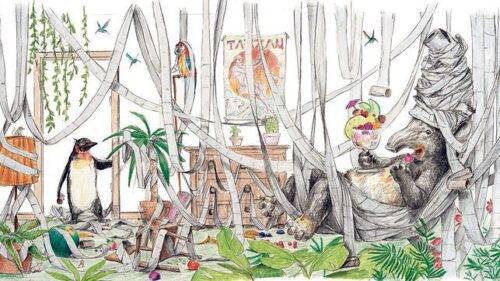 As crazy as it sounds, this actually wouldn’t be the worst picture book to hand to a small child with parents going through a divorce. I think it’s pretty clear from the book that sometimes you have nothing in common with the person you’re living with and that it’s best for all parties if a split is made. I don’t think the book was written with that intention in mind, and that is probably why it would work particularly well. There isn’t any didacticism to plow through. Just good storytelling
As crazy as it sounds, this actually wouldn’t be the worst picture book to hand to a small child with parents going through a divorce. I think it’s pretty clear from the book that sometimes you have nothing in common with the person you’re living with and that it’s best for all parties if a split is made. I don’t think the book was written with that intention in mind, and that is probably why it would work particularly well. There isn’t any didacticism to plow through. Just good storytelling
There’s a long history of funny German children’s literature that leads directly to Mr. Meschenmoser. Remember that this is the country where Der Struwwelpeter came to light (though its humor is a bit of an acquired taste). And alongside fellow contemporary funny German picture book artists like Torben Kuhlmann and Ole Konnecke he’s in good standing. With any luck we’ll be seeing more of their books coming to U.S. shores in the coming years. So who knows? Maybe if we get enough Gordon and Tapir types of books the humorless perception of the German people will undergo a change. At the very least, we’ll get some magnificent stories out of the deal. This one’s a keeper.
On shelves April 1st.
Source: Galley sent from publisher for review.
Like This? Then Try:

By:
Bianca Schulze,
on 12/13/2015
Blog:
The Children's Book Review
(
Login to Add to MyJacketFlap)
JacketFlap tags:
Ages 0-3,
Ages 4-8,
Ages 9-12,
Book Lists,
featured,
Grandparents,
Lane Smith,
Roaring Brook Press,
Knopf Books for Young Readers,
Reading Tips,
Little Brown Books for Young Readers,
Barney Saltzberg,
Quest for Literacy,
Family Books,
Lee Wildish,
Dial books,
Todd Parr,
Holly Schindler,
Jean Reagan,
Best Kids Stories,
NorthSouth Books,
Danny Chatzikonstantinou,
Todd Tarpley,
Add a tag
Reading books together is an incredibly easy and, not to mention, enjoyable way to be present and engaged with kids.
 by Annemarie Van Haeringen (available 10/1/15, NorthSouth Books)
by Annemarie Van Haeringen (available 10/1/15, NorthSouth Books)
Here’s a fun book: a stylish story both in look and in theme.
That cover, the signature shape of Chanel No. 5, juxtaposed not-so-glamourously with a girl scrubbing floors in a raggish kind of dress. The title, a crash course in fashion.
Coco Chanel.
This book was originally published in the Netherlands, and coincided with a museum exhibition of some original Chanel designs. Yet even apart from that collaborative effort, this book is a beautiful glimpse at the life of a girl who saw things a little bit differently.


First up: endpapers. From beginning to ending, from scraps to something refined.


Coco, fragile as an eggshell, a mistake, a nothing, an orphan.
But the nuns saw her talent for sewing, and Coco was happy.


When she grew up, she surrounded herself with fancy ladies in crazy hats. How can you think with a dead pigeon on your head?

Coco was a problem solver, and when she saw these fancy ladies riding sidesaddle in complicated skirts, Coco figured out how to sew trousers.
But when you sew trousers and are invited to the races, you need a fancy hat. One without a dead pigeon on your head.

So Coco created a hat shop. She created comfortable, easy clothing for women.


And the women tossed out their corsets.
With her little black dress, Coco figured out how to celebrate what a woman looks like, when it’s the woman you look at and not her clothes.
Her angel-like sewing skills, her observation and celebration of women, and her style: iconic.
Though if you want biographical information on Coco Chanel, you might want to supplement this book–it’s quite literally a lovely place to start, but there is no author’s note or bibliography of sources available for the reader aside from a small paragraph on the back cover.
But for everything this book is, it’s a luxurious simplicity.

I received a review copy from NorthSouth Books, but all opinions are my own.
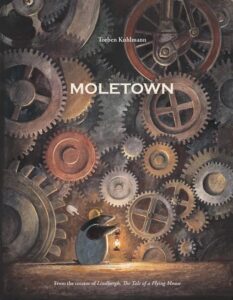 Moletown
Moletown
By Torben Kuhlmann
North/South Books, Inc.
$17.95
ISBN: 978-0-7358-4208-3
Ages 4-6
On shelves October 1st
Cautionary tales for kids who can’t do a darn thing about the original problem. It’s sort of a subgenre of its very own. As I hold this lovely little book, Moletown, in my hands I am transported back in time to the moment I first encountered The Lorax by Dr. Seuss. A child of the 80s, my youth was a time when scaring kids straight was an accepted educational technique utilized in everything from environmental protection to saying no to drugs. The film version of The Lorax bore this out and gave me some nice little bite-sized psychological scars for years to come. These days we don’t usually go in for the whole learning-through-fear technique. Even picture books that sport a message are more prone to be mildly sad than anything else. What makes Moletown so very interesting then is its inclination to tap into popular tropes in our own history, then turn them ever so gently on their heads. The end result is a book where you might easily lose sight of the bigger picture, until that final moment when everything becomes horribly clear.
“The story of Moletown began many years ago.” A single solitary mole moves beneath a meadow to live. Not long thereafter he’s joined by other moles “And over time, life underground changed…” Before our eyes we see it. We see the vast construction projects taking place to make Moletown a livable community. We see the population explosion, the increased technological advances, and different transportation models. Life becomes busier for the moles, while outside in the meadow nature is taking a severe hit. The green is close to disappearing altogether, but turn to the last pages in the book and there we see evidence not just of change, but of the moles as a whole taking on the responsibility of their newly green again meadowlands.
 Kuhlmann initially burst upon the American picture book scene with the highly detailed Lindbergh, a story of a mouse with a yen for flight. A little bit The Arrival, a little bit An American Tale and a little bit steampunk via Beatrix Potter, it was his hyper realistic animals placed in extraordinary circumstances that stayed with young readers. In Moletown that level of detail and attention is there, but the moles have a far more cartoonish feel to them. This is not to say that they don’t look like moles, every inch of them. Yet Kuhlmann has simplified his hyper-realistic renderings of animals and traded that attention in for set designs and landscapes. Here he plays with perspective, plunging us down into the heart of the moles’ mining operation, the scaffolding twisting around and around, down and down. Sharp eyed spotters will note other spreads where the stop signs are shaped like mole claws and the trains go vertically as well as horizontally. The details are there to an elegant degree, but the feel is different from Lindbergh certainly (as is the length of the piece).
Kuhlmann initially burst upon the American picture book scene with the highly detailed Lindbergh, a story of a mouse with a yen for flight. A little bit The Arrival, a little bit An American Tale and a little bit steampunk via Beatrix Potter, it was his hyper realistic animals placed in extraordinary circumstances that stayed with young readers. In Moletown that level of detail and attention is there, but the moles have a far more cartoonish feel to them. This is not to say that they don’t look like moles, every inch of them. Yet Kuhlmann has simplified his hyper-realistic renderings of animals and traded that attention in for set designs and landscapes. Here he plays with perspective, plunging us down into the heart of the moles’ mining operation, the scaffolding twisting around and around, down and down. Sharp eyed spotters will note other spreads where the stop signs are shaped like mole claws and the trains go vertically as well as horizontally. The details are there to an elegant degree, but the feel is different from Lindbergh certainly (as is the length of the piece).
 One of the most amazing aspects of the book is the sense of time passing. In the early days of Moletown you see the immigrants arriving, looking very much like the European immigrants of the late 19th century. As time passes you see moles in Wright Brothers era caps, trench coats and fedoras of the 40s, a possible homage to the MTV image of the 80s (complete with Nintendo video game remotes), and finally the iPods and wind farms of the current age.
One of the most amazing aspects of the book is the sense of time passing. In the early days of Moletown you see the immigrants arriving, looking very much like the European immigrants of the late 19th century. As time passes you see moles in Wright Brothers era caps, trench coats and fedoras of the 40s, a possible homage to the MTV image of the 80s (complete with Nintendo video game remotes), and finally the iPods and wind farms of the current age.
Many European artists find it difficult to break into the American market due to the fact that their art contains a distinctly “foreign” feel. Kuhlmann’s advantage here is that while it is easy enough to believe that the images in this story originated in Germany, there is nothing distinctly “other” about the book . . . at first. It’s only with multiple readings that you begin to notice the elements that probably could not have begun here in the States. For example, in more than one instance you’ll see a mole smoking. This is by no means the focus of the book, and you would have to look somewhat hard to find such moments, but I have seen American parents go ballistic over far lesser crimes in picture book illustration, so I’ve no doubt the occasional library patron will become incensed over what they believe to be the promotion of cigarettes. Other hints that the book is German? Well, I could be wrong but this may well be the only picture book you’ll find on the market today containing a two-page spread dedicated to accountancy.
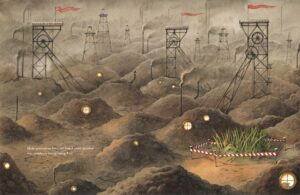 One interesting thing about the book is the fact that the ending that we so deeply desire is embedded not in the book itself but in its endpapers. The final text in the book reads, “Many generations later, the moles’ green meadow had completely disappeared. Almost.” Turn the page and rather than provide a verbal explanation, the book gives us a glimpse of a series of photographs alongside an article from The Moletown Times which reads, “Agreement on Green”. The pictures show steps taken to preserve the environment and restore the meadow. I didn’t mind this method of summing up the steps taken to correct the past. Yet more interesting to me, by far, was how the book lets the reader reach their own slow realization that the seemingly inevitable trudge of technological advances and population increases are, in fact, detrimental. That picture at the beginning of the book of the immigrants arriving in Moletown, to an American reader, strikes you as a symbol of freedom from oppression and hardship. And because Kuhlmann keeps the book almost entirely wordless from start to finish, the glimpses of the meadow in its downward slide towards decay are shown without commentary. It’s up to the reader to realize that something has gone very wrong. How many will actually make that leap will be interesting to see.
One interesting thing about the book is the fact that the ending that we so deeply desire is embedded not in the book itself but in its endpapers. The final text in the book reads, “Many generations later, the moles’ green meadow had completely disappeared. Almost.” Turn the page and rather than provide a verbal explanation, the book gives us a glimpse of a series of photographs alongside an article from The Moletown Times which reads, “Agreement on Green”. The pictures show steps taken to preserve the environment and restore the meadow. I didn’t mind this method of summing up the steps taken to correct the past. Yet more interesting to me, by far, was how the book lets the reader reach their own slow realization that the seemingly inevitable trudge of technological advances and population increases are, in fact, detrimental. That picture at the beginning of the book of the immigrants arriving in Moletown, to an American reader, strikes you as a symbol of freedom from oppression and hardship. And because Kuhlmann keeps the book almost entirely wordless from start to finish, the glimpses of the meadow in its downward slide towards decay are shown without commentary. It’s up to the reader to realize that something has gone very wrong. How many will actually make that leap will be interesting to see.
Finding books to compare this one to can be difficult. The overall feeling I got was like the one in The Rabbits by John Marsden. But where that was a story of a culture being systematically destroyed, this has a sweeter if no less destructive feel. The Lorax hits the same environmental notes, but Moletown is the subtler of the two since it makes the reader implicit in the enjoyment one derives from Moletown’s culture (and from the fact that it’s a world that feels very much like our own). The best way to describe the story is to say that it’s a combination of the two, with a hopeful endnote all its own. Like all imports, it runs its greatest risk in becomes a forgotten piece since it can’t win many of our American children’s book awards. That said, I have faith that teachers, parents, and students will find in it a new approach to tackling the tricky subject of mass consumption vs. environmental action. Explicit in its message. Subtle in its presentation. In short, a beaut.
On shelves October 1st.
Like This? Then Try:
The Lorax by Dr. Seuss
The Rabbits by John Marsden, illustrated by Shaun Tan
The Promise by Nicola Davies


By: Carter Higgins,
on 2/4/2015
Blog:
Design of the Picture Book
(
Login to Add to MyJacketFlap)
JacketFlap tags:
Uncategorized,
germany,
balance,
rhythm,
fable,
white space,
janosch,
contrast,
northsouth books,
just one apple,
Add a tag

by Janosch (NorthSouth, 2014; originally published 1965 in Switzerland as Das Apfelmänchenn.)
I love a good pen name, and Janosch has one. His real name is Horst Eckert, and he is one of Germany’s most beloved children’s book authors and illustrators. He was new to me until NorthSouth revived this classic in late 2014. I’m so glad they did.
This is Walter’s story. He was the poorest man in the entire kingdom and he only had one single apple tree. A strong and beautiful tree, a nice home for a solitary cardinal. But no fruit. No blossoms. No bending branches.
Walter wishes for an apple. Just one. And when you wish with all your might, things change.
And his wishes came true, as wishes sometimes do.

(click to enlarge)
The art is loose and fiery. Full of motion and an eery calm.
But I love how this book breathes.
A page of art, a page of text. A page of text, a page of art. The contrast between Walter’s colorful (and worrisome) world and the spare white space of the words sets a comforting rhythm to a familiar story.
And the apple grows. So Walter goes to the market.

(click to enlarge)
The very worst feeling in the whole world is when other people don’t believe in your wishes.
Walter loses interest in his apple and in his wishes and in his life.
Until the dragon comes to town.

(click to enlarge)
Here’s where the breathing hitches and the white space/art space tempo gives way to one glorious spread of Walter’s wish saving the kingdom. It’s startling and ridiculous and wonderful.
And after that, Walter was careful what he wished for.

 Recently I had the pleasure of attending the AAP Tri-State Book Buzz for Children’s and Teen Librarians here in NYC. This is an event where a whole heaping helpful of publishers gather together to do a kind of massive librarian preview for folks like myself. It’s a mix of big folks (Macmillan, Random House, etc.) and smaller houses you might not hear from otherwise. With that in mind, I’ve either already attended or am about to attend some of the big guys, so I’ll leave them off of this particular preview. Additionally, I had a meeting in the morning of the Book Buzz day so those publishers who just happened to present anything prior to 1 p.m. pretty much fell off of my radar. Sorry, guys!
Recently I had the pleasure of attending the AAP Tri-State Book Buzz for Children’s and Teen Librarians here in NYC. This is an event where a whole heaping helpful of publishers gather together to do a kind of massive librarian preview for folks like myself. It’s a mix of big folks (Macmillan, Random House, etc.) and smaller houses you might not hear from otherwise. With that in mind, I’ve either already attended or am about to attend some of the big guys, so I’ll leave them off of this particular preview. Additionally, I had a meeting in the morning of the Book Buzz day so those publishers who just happened to present anything prior to 1 p.m. pretty much fell off of my radar. Sorry, guys!
Even though I only spent a small portion of my time at the Book Buzz I’m just going to highlight the books that caught my particular attention. Because honestly there were some truly interesting titles on display. Here’s just a small sampling of what I happened to see. First up:
Sourcebooks
Changes: A Child’s First Poetry Collection by Charlotte Zolotow, ill. Tiphanie Beeke (9781492601685)
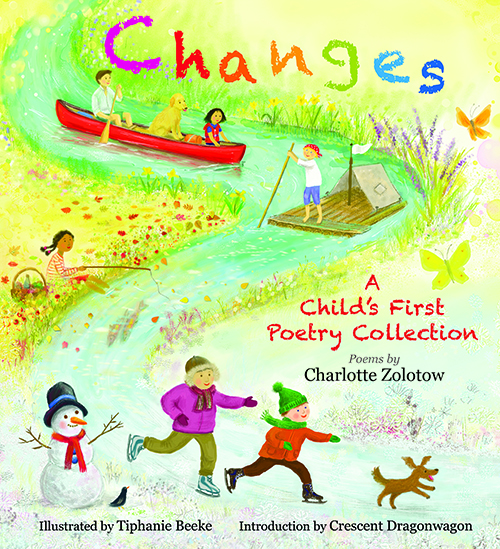
This year (2014) I had a great deal of difficulty finding good poetry books. Honestly, at times it felt like I was pulling teeth to find anything halfway decent. This shouldn’t be so hard! So I was keeping a very sharp eye out for anything verse-like. I was quickly rewarded by this, the first collection of ALL of Zolotow’s seasonal poetry. You remember Ms. Zolotow, yes? Worked under Ursula Nordstrom? Mother of Crescent Dragonwagon? Yep, well I’ve always been a fan of her book Seasons as illustrated by Erik Blegvad so this is just a natural follow-up. It’s coming out in the same year when she would have celebrated her 100th birthday. If the illustrator (Tiphanie Beeke) looks somewhat familiar that may be because she was behind that rather lovely little book Fletcher and the Falling Leaves which came out a couple years ago.
Fairy Tale Reform School: Flunked by Jen Calonita (9781492601562)
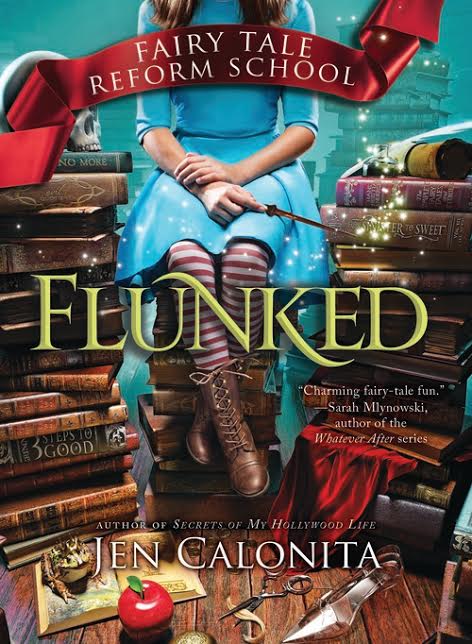
On the middle grade side of things we have Fairy Tale Reform School: Flunked by Jen Calonita. Written by the author of the YA novel Secrets of my Hollywood Life the premise behind this one is that when a villain is vanquished in a tale it’s time for them to go to reform school. Our heroine is a normal girl who lives in a shoe with her siblings and is so poor that she’s forced to steal. One thing leads to another and the next thing she knows she’s in a reform school where all the teachers are former villains. Kinda writes itself, right?
This Book is Gay by James Dawson (9781492617822)

I don’t cover YA usually but for this book I shall make an exception. It was a little bit difficult to parse but insofar as I could tell this appears to be a handbook for dealing with sexual identity. It’s a YA nonfiction title with a forward is by David Levithan and it’s full of sketches, illustrations, and jokes. As they say, it’s for anyone exploring their own identity.
National Geographic Kids
Why’d They Wear That? by Sarah Albee (forward by Tim Gunn) (9781426319204)
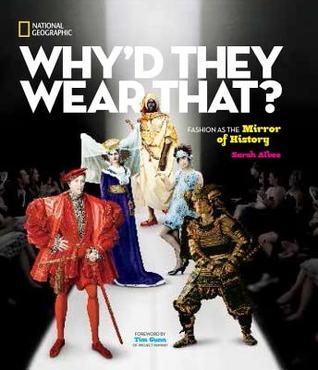
Now see, the reason I like National Geographic Kids is that they’re reliable. Take Why’d They Wear That?, for example. You know what you’re getting here, even if you don’t know the details. Mind you, the details are where all the good stuff is. Chronicling the history of the world through the lens of fashion, the book covers everything from the Syrian warriors who rode into battle in fishnets to an Archbishop of Canterbury who wore a hair shirt so full of bugs that they left his body and flew into the cold when he was assassinated. From togas to mini skirts, this book talks about clothing and explains why folks wore one thing or another with plenty of historical context.
Untamed: The Wild Life of Jane Goodall by Anita Silvey (9781426315190)

I think I heard about this book a little while ago and got very excited . . . until I realized that it wasn’t coming out until 2015. Fortunately that year is breathing down our neck and so tis nigh! Nigh, I say, nigh! From her childhood in WWII England to the jungles of Gombe this book covers everything Jane related. Riveting and full of images (including the photography of Michael Neugebauer) this has lots of great content from the field. It’s the most up-to-date title out there for kids. At least for an older readership.
Dirtmeister’s Nitty Gritty: Planet Earth by Steve Tomecek (9781426319037)

Steve Tomecek, the Executive Director and founder of Science Plus, Inc., and Digger his prairie dog sidekick talk all about dirt. Or, put another cuter way, dish the dirt on dirt. Tomecek had a New York Kids show on WNYC radio in New York City for eight years so he’s old school. In his book, Fred Harper from Marvel illustrates multiple peppy comic book sections that start off each chapter. Inside you’ll find DIY experiments, facts, and science bios along with lots of STEM connections. Happy science stuff.
How to Speak Cat by Aline Alexander Newman and NPR’s Dr. Gary Weitzman (President of the San Diego Animal Humane Society) (9781426318634)

This would be a companion to the previously published How to Speak Dog. The dog vs. cat voice in my head wonders which of the two books will sell better. In any case in this tome you get, amongst other things, an explanation of what the 30 different cat poses mean. Lots of expert cat training advice is in this one as well.
1000 Facts About the Bible (9781426318665)

You don’t have to be a library in a religious community to appreciate what National Geographic is going for here. Big and small pieces of information give some great background. Little facts include the tidbit that David was crowned with a 75-pound crown and, elsewhere, that the blue of the robes mentioned in the text came from sea snails. Easy to understand words are helped in no small part by the Biblical scholars who were consulted. Naturally this makes me wonder how long it took them to write the darn thing. My suspicion: quite a while.
Maddeningly they also teased us with Fall 2015 titles as well. With that in mind look for . . .
Book of Nature Poetry edited by J. Patrick Lewis

Treasury of Norse Mythology by Donna Jo Napoli
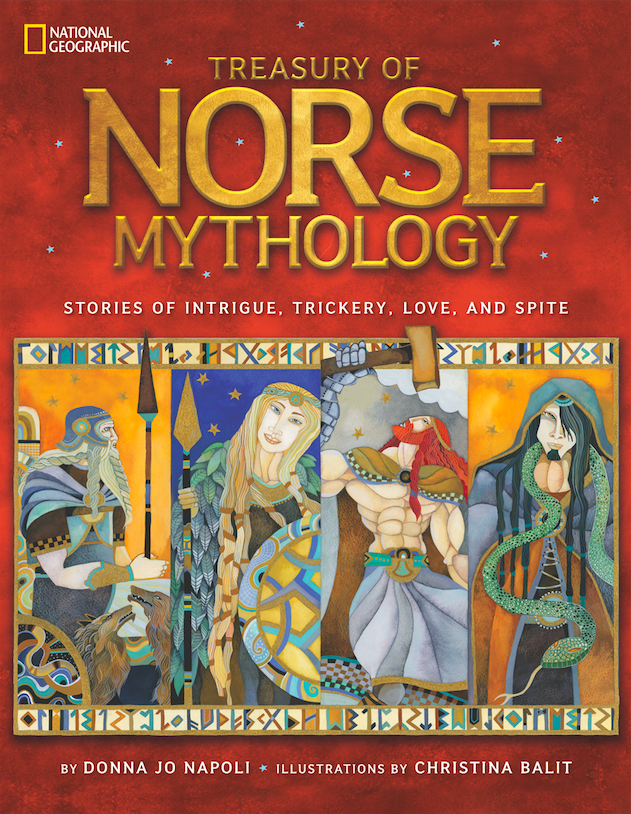
Welcome to Mars by Buzz Aldrin
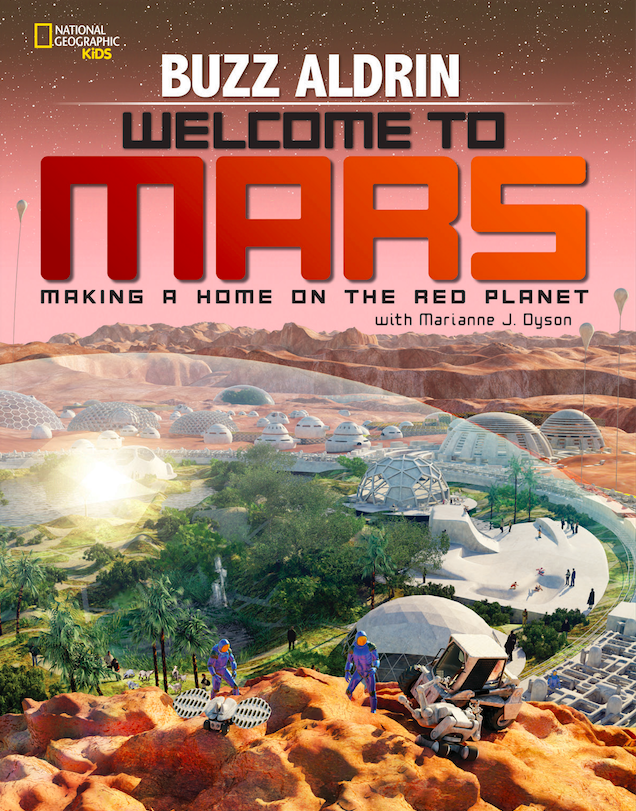
At this point in the proceedings, mention was made of a magazine I’d not heard of before. It’s not like I’ve been following the periodical trends for teens and pre-teens since I was one myself. So to hear that there’s a publication out there called Justine that contains “more teen book reviews than any other magazine” . . . well that’s just downright cool it is. Voila:

Quirk Books
Based out of Philly. A quarter of this little publisher’s output consists of books for kids. I often say that small publishers just need one book to sustain them for life. Well Quirk produced Miss Peregrine’s Home for Peculiar Children so I’d say they’re pretty much good to go. For, like, ever. Most of their children’s books coming out in 2015 are just sequels, but there was one adult title that actually caught my eye.
Horrorstor by Grady Hendrix (9781322126760)

A classic horror novel set in a Swedish furniture store, written like an IKEA catalog.
Sterling
Next up, Chris Vaccari, a man clever enough to name drop his local library branch (Kips Bay). Chris thrives in a BookBuzz atmosphere. He is calm. He is at ease. And yet, all at the same time, he is capable of packing in loads of information about the books Sterling is producing soon. Case in point:
Good Question: History Series: Did Christopher Columbus Really Discover America? by Emma Carlson Berne (9781454912590)
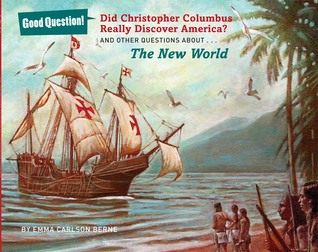
This is a series that dare to question history. Particularly useful when we’re talking about that ever so controversial Italian Columbus.
Little Traveler series – How Tiger Says Thank You (9781454914976), How Penguin Says Please (9781454914969) by Abigail Samoun, illustrated by Sarah Watts
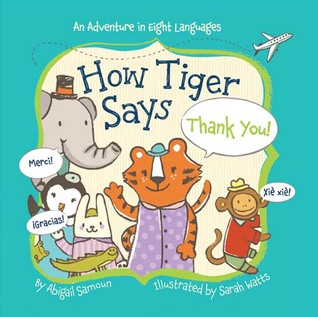
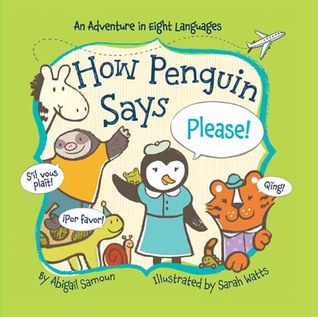
These are the latest two books in this series to come out. I should note though that my librarians are BIG fans of these books. They’re finding them easy to hand sell and really filling a need for those parents that wish to get their small children interested in other languages.
ABC Universe – done in conjunction with the American Museum of Natural History (9781454914099)
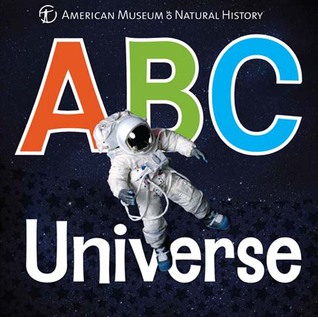
Just consider it an oversized board book for the budding little astronomers in your life.
I’m Not Reading by Jonathan Allen(978-1910126240)
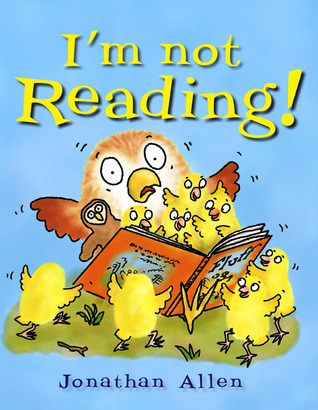
Man. Way back at the beginning of my blogging career, around 2006 I reviewed the Jonathan Allen baby owl book I’m Not Cute. It’s nice to see the series not only still kicking around but upgrading to a whole new board book form.
Ally-Saurus by Richard Torrey (9781454911791)
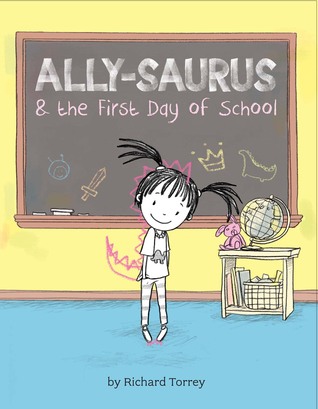
Who says only boys get to love dinosaurs? Yet when Ally starts school she finds she’s the only girl there who’s into dinosaurs. She is subsequently snubbed by princess lovers (and on this, the 10th anniversary of Mean Girls). I know I’ll be looking forward to this.
A Dozen Cousins by Lori Houran, ill. Sam Usher (9781454910626)
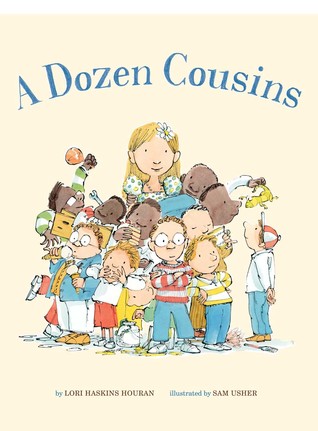
The plot is simple: one girl has a dozen boy cousins. She loves them but they sure do bug the heck out of her. Nice and multicultural, this is utterly pleasant (and more interesting than a lot of the other “big family” tales out there).
North/South
The Birthday Cake: The Adventures of Pettson and Findus by Sven Nordquist (978-0735842038)
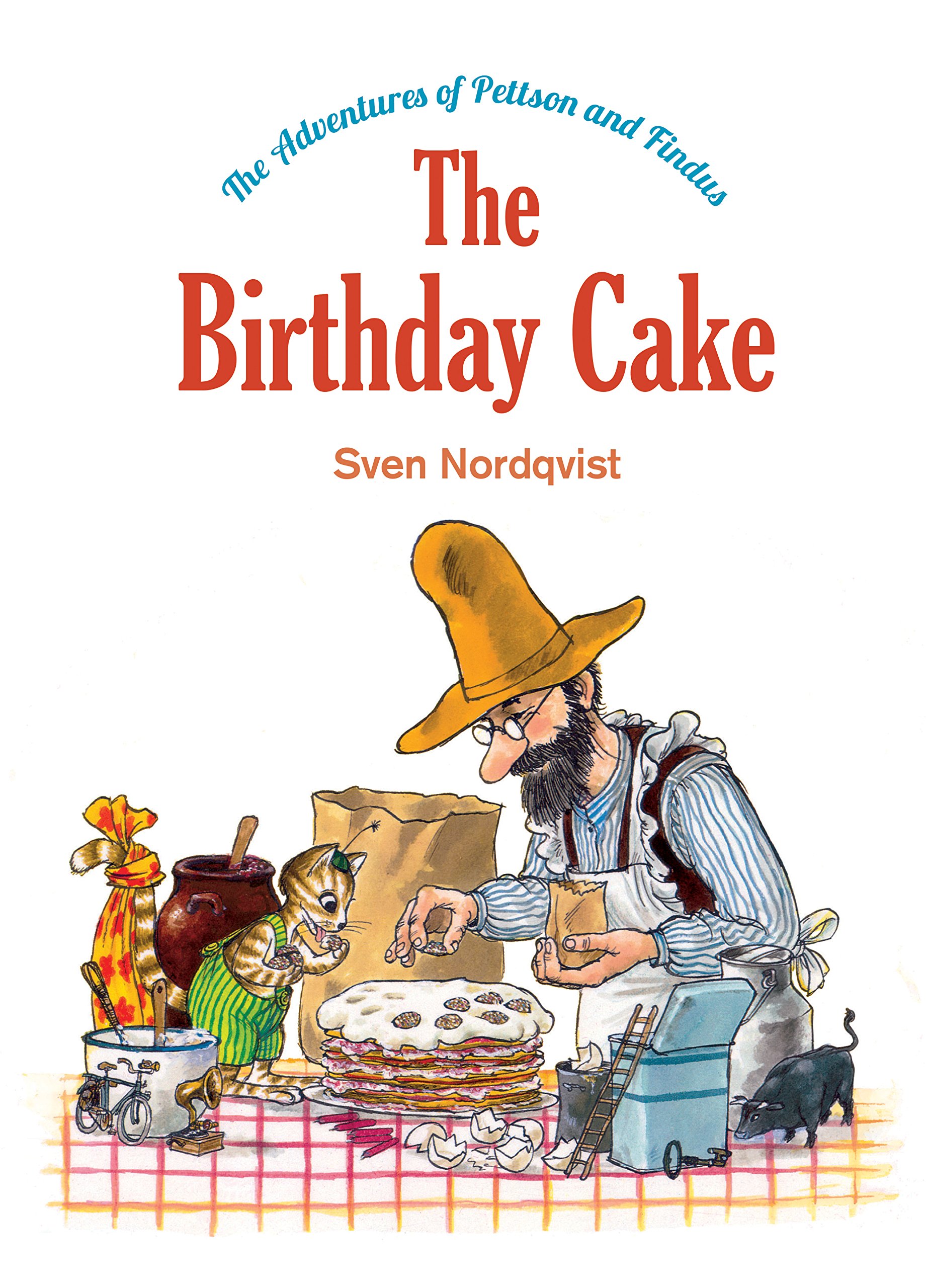
I believe this is a reprint of an older title. In it, Pettson is a forgetful farmer and his neighbor gives him a kitten named Findus. So he reads the kitten so much that the cat starts to talk. In this book it’s Findus’s birthday (which somehow happens more than once in a year). The dilemma? Our intrepid heroes need flour for a cake. To get the flour they need a bike, to fix a tower they need to get into the shed, to get into the shed they need a ladder to get to the sunroof, and so on and such. Phil Pullman did the blurb for the books and said that it has a folktale feel. Noted.
Mr. Squirrel and the Moon by Sebastian Meschenmoser (978-0735841567)
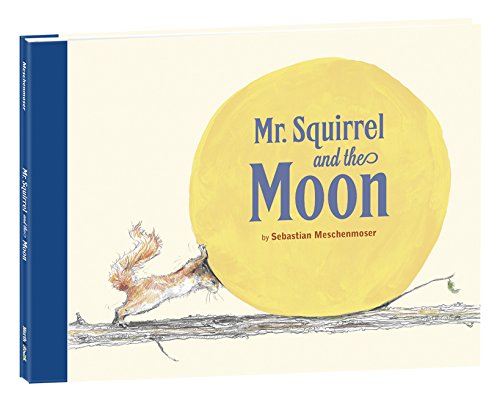
If you buy nothing else I mention to you today, buy this. Show some of the art. On the endpages you see a boy with his father and one of the man’s wheels of cheese is rolling down the hill and flies into the sky. Later, a squirrel wonders how the moon got into his tree. Worried that someone will think he’s the thief he tries to roll it off the tree. The cheese next gets stuck on a hedgehog and a goat gets stuck in it. The art is the real lure here. A-maze-ing.
The Bernadette Watts Collection: Stories and Fairy Tales by Bernadette Watts (978-0735842120)
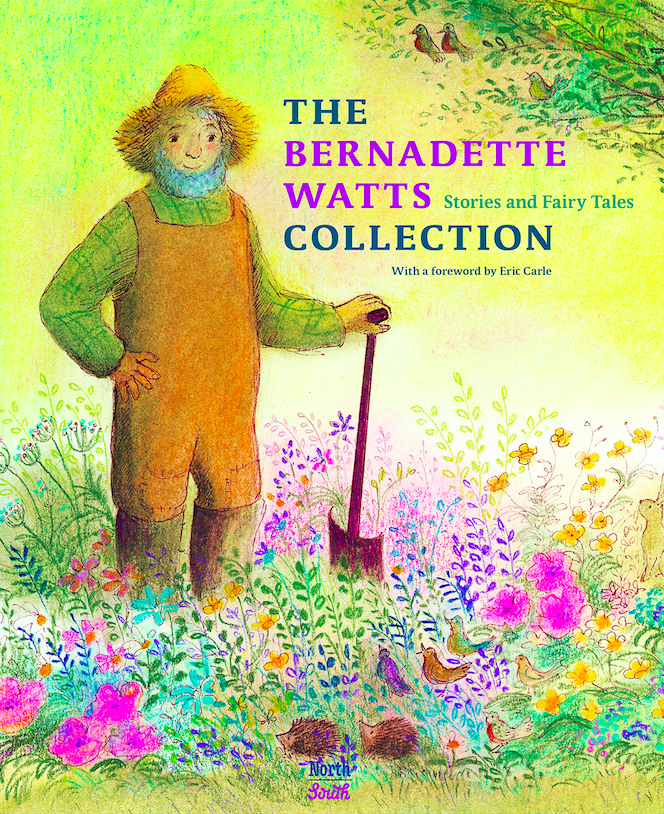
Turns out, Ms. Watts is beloved in Europe. They just call her Bernadette there. In this book you will find thirty-eight timeless tales with an Eric Carle forward. The result is a book containing pitch perfect, sumptuous backgrounds.
Perseus Books Groups (Running Press Kids)
Go, Pea, Go! by Joe Moshier and Chris Sonnenburg (978-0762456789)
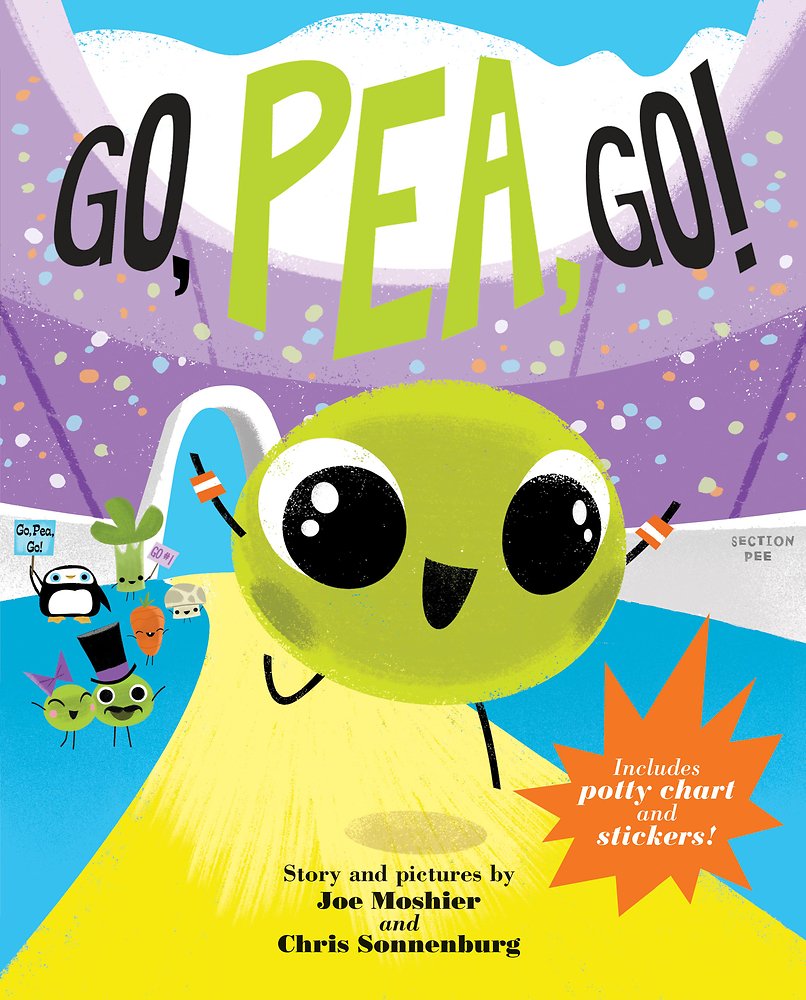
I’ll give ‘em this. I have never seen a potty book that used peas in some manner. This book features one such rhyming pea. He is told by his family to go. See the world. A potty chart and stickers are part of the ensemble.
Butterfly Park by Elly Mackay (978-0762453399)
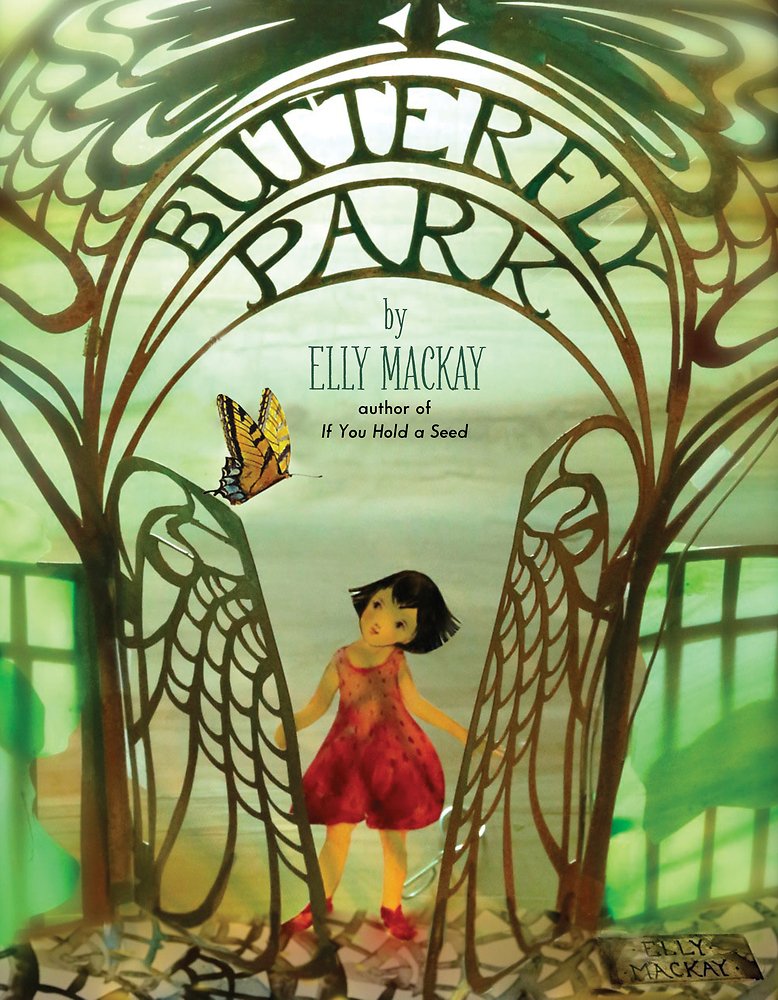
A paper cut artist takes it to the next level. In this story a girl moves next to a butterfly park and then goes and sees that there aren’t any there. She then gets the community together to plant the plants that attract butterflies.
My Life in Dioramas by Tara Altebrando (978-0762456819)
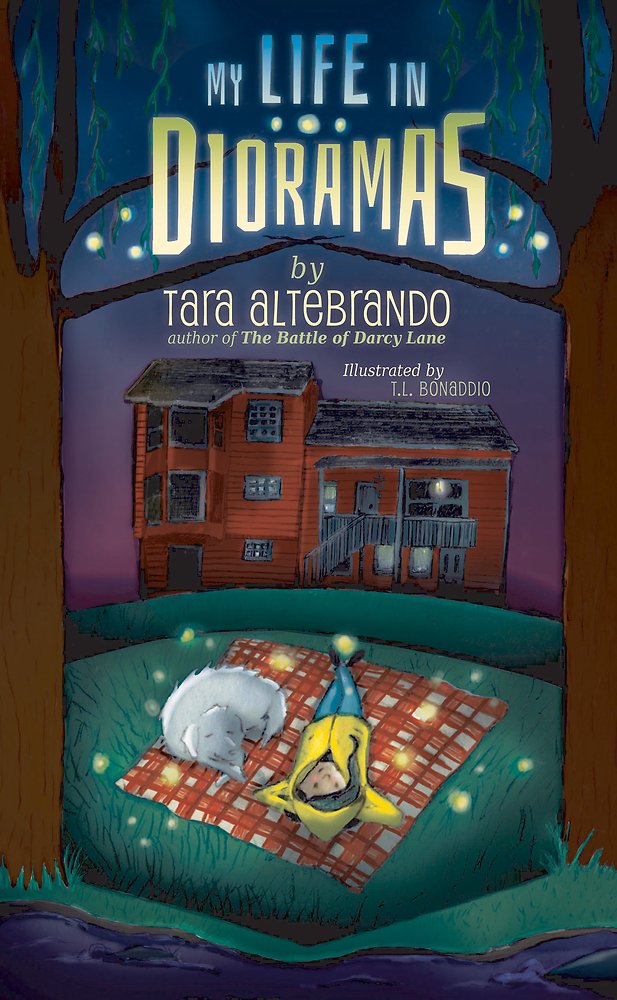
In this tale a 12-year-old girl’s family is selling their red barn home. She’s against this move so she creates dioramas of each room to best preserve her memories. She also tries to throw a wrench in the works to prevent the sales. One color illustrated dioramas for each chapter. Essentially, it’s all about moving forward.
And that was that. Phew! I can’t imagine how tricky it would be to organize such a thing. Many thanks to the folks who presented. I’ve high hopes for these books.

 There’s a special thrill that fills me when I get to do a librarian preview of a publisher I’ve never done before. It does me good. Though I like what the big guys produce, it’s the little guys that truly have my heart. Case in point, NorthSouth Books. If they’re a bit unfamiliar to you, don’t worry about it. Turns out they’re the U.S. arm of Zurich-based NordSüd Verlag. They were mostly doing imports but now they’ve started acquiring original titles here in the U.S. Oo de lally. For more info on the company I suggest you read the recent PW article A New Chapter for NorthSouth Books, which gives a mighty thorough and in-depth look at the company.
There’s a special thrill that fills me when I get to do a librarian preview of a publisher I’ve never done before. It does me good. Though I like what the big guys produce, it’s the little guys that truly have my heart. Case in point, NorthSouth Books. If they’re a bit unfamiliar to you, don’t worry about it. Turns out they’re the U.S. arm of Zurich-based NordSüd Verlag. They were mostly doing imports but now they’ve started acquiring original titles here in the U.S. Oo de lally. For more info on the company I suggest you read the recent PW article A New Chapter for NorthSouth Books, which gives a mighty thorough and in-depth look at the company.
So it was that Heather Lennon sat down with me to show me “the goods”, as it were, for the upcoming season. And sister, some of these are real doozies.
 First up, we’re hitting you straight in the jugular. Leonce and Lena: A Comedy isn’t your average everyday book for kids. Written by Georg Buchner, illustrated by Lisbeth Zwerger and ultimately retold by Jurg Amann, the book is actually a German play. Reading it feels like nothing so much as a reading of The Fantastiks, which is an odd thing to say but I have my reasons. The story involves a prince and a princess engaged to be wed through an arranged marriage. Neither is particularly thrilled with the notion and through a series of misadventures they happen to flee, meet, and fall in love without realizing who the other is. The play was adapted here by “one of Switzerland’s most respected writers” and then Zwerger (who is famous in her own right) provided the gorgeous art. Since I live in New York and my young patrons often come in demanding plays and monologues for auditions and school shows, this certainly fits the bill.
First up, we’re hitting you straight in the jugular. Leonce and Lena: A Comedy isn’t your average everyday book for kids. Written by Georg Buchner, illustrated by Lisbeth Zwerger and ultimately retold by Jurg Amann, the book is actually a German play. Reading it feels like nothing so much as a reading of The Fantastiks, which is an odd thing to say but I have my reasons. The story involves a prince and a princess engaged to be wed through an arranged marriage. Neither is particularly thrilled with the notion and through a series of misadventures they happen to flee, meet, and fall in love without realizing who the other is. The play was adapted here by “one of Switzerland’s most respected writers” and then Zwerger (who is famous in her own right) provided the gorgeous art. Since I live in New York and my young patrons often come in demanding plays and monologues for auditions and school shows, this certainly fits the bill.
 The ABC of Fabulous Princesses by Willy Puchner would, if you just said the name and did not see the cover, give you the impression that the book is one of those catalogs of princesses. We see these from time to time, usually European in origin, containing various flights of fancy where the likes of variegated royalty are concerned. The difference in the case of Puchner’s book (first published in Switzerland under the title ABC der fabelhaften Prinzessinnen) and those others may be the fact that everyone in this book is an anthropomorphized bird. But as Heather put it, “There’s no point in being a small publisher without stepping out sometimes.” So it is that we read the story of Prince William and his quest to find the princess that will make the best match. Each of the 26 is an alliterative lass. Here, for example, is what you find when you get to Princess Beatriz.
The ABC of Fabulous Princesses by Willy Puchner would, if you just said the name and did not see the cover, give you the impression that the book is one of those catalogs of princesses. We see these from time to time, usually European in origin, containing various flights of fancy where the likes of variegated royalty are concerned. The difference in the case of Puchner’s book (first published in Switzerland under the title ABC der fabelhaften Prinzessinnen) and those others may be the fact that everyone in this book is an anthropomorphized bird. But as Heather put it, “There’s no point in being a small publisher without stepping out sometimes.” So it is that we read the story of Prince William and his quest to find the princess that will make the best match. Each of the 26 is an alliterative lass. Here, for example, is what you find when you get to Princess Beatriz.
“Princess Beatriz comes from Bogota. She is bashful, bright, and at times badly behaved. She likes bacon, blueberries, and banana bread. Beatriz is a bibliophile and spends her time reading best sellers while her beagle barks in the bookstore. She brings Prince William blueprints of the brilliant Baron Bluebeak and his band of brothers.”
This is accompanied with lovely illustrations where everyone is a bird, one way or another. The child reader is then charged with determining William’s best match at the end. It’s oddly enticing.
 Call Me Jacob by Marie Hubner, illustrated by Iris Wolfermann is also originally of Switzerland but I can’t write out its original title because my computer doesn’t contain the correct characters. Now I don’t know about you, but in my library system there are a couple folks who have a distinct distaste for books with that distinctive European illustrative style. Jacob is obviously European when you first look at it, but inside the pictures have a very American flair (whatever that might be). The story concerns a boy named Matthew who wants to be called Jacob, a name which just happens to belong to his brave skateboarding cousin. As his week continues he appropriates the names of the boys who have talents and skills he desires. That is, until the moment he comes back around to good old Matthew. It’s sort of a My Name Is Yoon concept, but without the cross-cultural differences. Names have power, and part of what I like about the book is that it makes use of that understanding in a kid-friendly way.
Call Me Jacob by Marie Hubner, illustrated by Iris Wolfermann is also originally of Switzerland but I can’t write out its original title because my computer doesn’t contain the correct characters. Now I don’t know about you, but in my library system there are a couple folks who have a distinct distaste for books with that distinctive European illustrative style. Jacob is obviously European when you first look at it, but inside the pictures have a very American flair (whatever that might be). The story concerns a boy named Matthew who wants to be called Jacob, a name which just happens to belong to his brave skateboarding cousin. As his week continues he appropriates the names of the boys who have talents and skills he desires. That is, until the moment he comes back around to good old Matthew. It’s sort of a My Name Is Yoon concept, but without the cross-cultural differences. Names have power, and part of what I like about the book is that it makes use of that understanding in a kid-friendly way.
 At the moment the book I’m reading is the third Adam Gidwitz title that was released this past October, The Grimm Conclusion. So it’s all the more fitting to find myself learning about the upcoming picture book The Six Swans by the Brothers Grimm, illustrated by Gerda Raidt. Those of you who know the original story might shirk away a bit since there’s definitely a section or two in which an evil queen fingers a mute girl with the crime of cannibalism and infanticide. Fun! But actually, this version really lightens the story without coming across as inauthentic. You are probably familiar with the story of the girl with the brothers turned into swans and how she must never say a word as she knits them sweaters. In some versions she’s making the sweaters out of nettles. In this one it’s starflowers. At any rate, the art is great and the story really well told. I can say with certainty that we’ve never had a really good Six Swans picture book. Time to start!
At the moment the book I’m reading is the third Adam Gidwitz title that was released this past October, The Grimm Conclusion. So it’s all the more fitting to find myself learning about the upcoming picture book The Six Swans by the Brothers Grimm, illustrated by Gerda Raidt. Those of you who know the original story might shirk away a bit since there’s definitely a section or two in which an evil queen fingers a mute girl with the crime of cannibalism and infanticide. Fun! But actually, this version really lightens the story without coming across as inauthentic. You are probably familiar with the story of the girl with the brothers turned into swans and how she must never say a word as she knits them sweaters. In some versions she’s making the sweaters out of nettles. In this one it’s starflowers. At any rate, the art is great and the story really well told. I can say with certainty that we’ve never had a really good Six Swans picture book. Time to start!
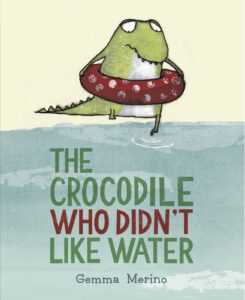 The Crocodile Who Didn’t Like Water is by Gemma Merino is adorable, but not in the treacly, sickly sweet sense. It follows a family of crocodiles and the one who simply does not care much for aquatic . . . . anything. He can’t play with his brothers and sisters or swim well or anything. When he gives it all he has and fails he’s left with a little cold. A little fire-breathing cold. Turns out, he’s not a crocodile at all but a dragon. “And this little dragon wasn’t meant to swim. He was born to fly.” Human nature naturally inclines towards stories of outcasts that come into their own. This one is perfect. It sort of reminded me of Guji Guji but it’s a bit better in terms of telling a story about embracing your own differences, no matter what they might be.
The Crocodile Who Didn’t Like Water is by Gemma Merino is adorable, but not in the treacly, sickly sweet sense. It follows a family of crocodiles and the one who simply does not care much for aquatic . . . . anything. He can’t play with his brothers and sisters or swim well or anything. When he gives it all he has and fails he’s left with a little cold. A little fire-breathing cold. Turns out, he’s not a crocodile at all but a dragon. “And this little dragon wasn’t meant to swim. He was born to fly.” Human nature naturally inclines towards stories of outcasts that come into their own. This one is perfect. It sort of reminded me of Guji Guji but it’s a bit better in terms of telling a story about embracing your own differences, no matter what they might be.
Two Parrots by Rashin Kheiriyeh is inspired by a story by Rumi. If that sounds vaguely familiar (parrots… Rumi…) it may be because a couple of years ago Disney/Hyperion published The Secret Message by Mina Javaherbin, which is based on the same story. The advantage Rashin has here is the art. Because there are certain madcap books that just earn my love in the strangest of ways. Here’s a good example. Check out the cover of this book:
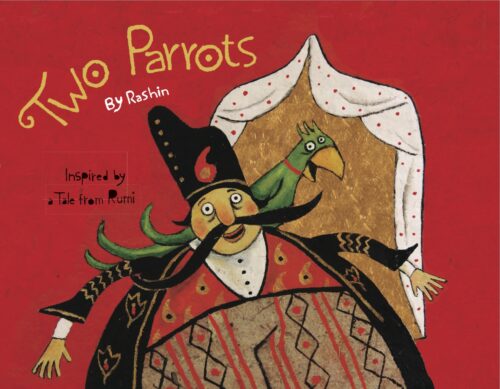
Now check out the very first image we receive of the wealthy merchant (I apologize for the quality, which will be much higher in the final product):
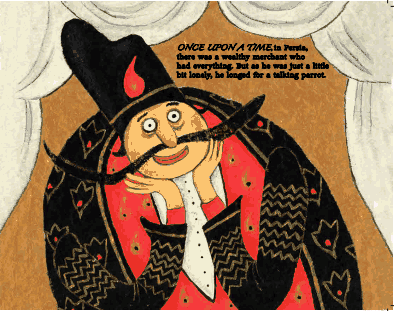
Jon Scieszka once explained that the genius of David Shannon’s work on Robot Zot lay in part in the fact that he made the pupils in the eyes of his hero two different sizes. Nothing conveys wackiness better than that. In this story a parrot and his kin must trick a greedy merchant using their wits. It’s charming.
I think it’s always a good idea to wrap-up a preview with something jaw-dropping. Problem is, most previews don’t provide you with that particular thrill. Fortunately, this time around NorthSouth came through with flying colors. This book trailer is your required watching of the day.
It’s An American Tail meets The Arrival.
Lindbergh by Torben Kuhlmann is German originally and it is undoubtedly one of the most gorgeous little books I’ve seen in a very long time. As you could see from the trailer, a single mouse wishes to escape across the ocean. Cats and owls attempt to stop him but through trial and error he finally hits on the ideal mouse-sized flying machine. The art brings to mind illustrators like Bagram Ibatoulline or Robert Ingpen. Always great to have a new name to play around with. And a new book, for that matter. Here’s the cover:
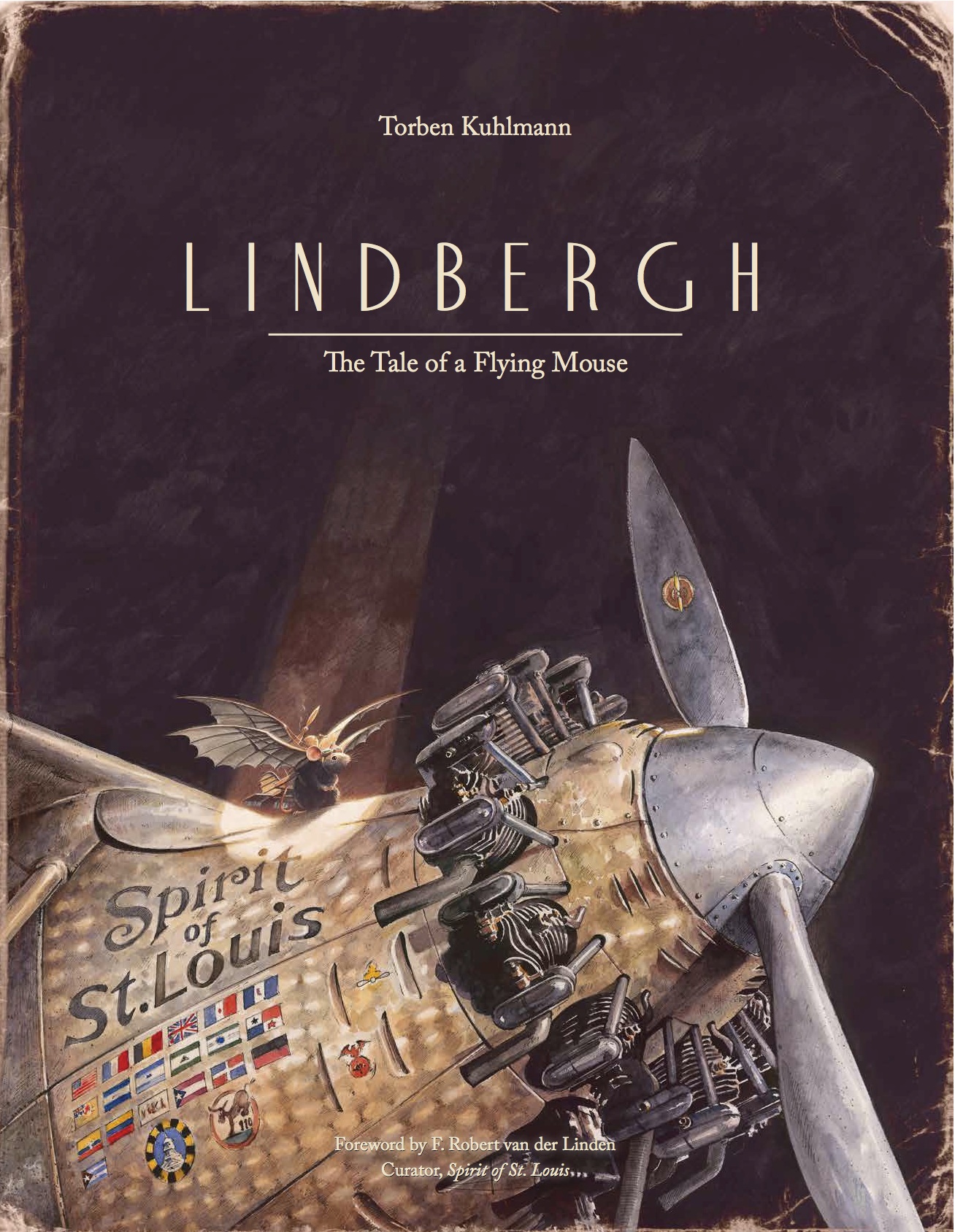
Thanks again to Heather for sitting down with me and showing me these lovely wares! Spring cannot come fast enough.







By: Carter Higgins,
on 9/24/2013
Blog:
Design of the Picture Book
(
Login to Add to MyJacketFlap)
JacketFlap tags:
design,
graphic novel,
picture books,
comics,
color,
concept,
trailers,
wordless,
composition,
shape,
jacques tati,
contrast,
northsouth books,
david merveille,
mr. hulot,
Add a tag
 by David Merveille, based on the character brought to life by Jacques Tati.
by David Merveille, based on the character brought to life by Jacques Tati.
{published 2013, by NorthSouth Books}
I was smitten by the looks of this book at first glance. Perhaps it was a bit of that orange and blue thing, and a bit of it just being so spectacular. But first, I had to introduce myself to Monsieur Hulot, the comical character from French cinema, and the spirit and subject of this book.
His trademarks are his raincoat, umbrella, pipe, and sheer ineptitude.
I loved him immediately. Here’s a trailer (love those title graphics!) for Les Vacances de Monsieur Hulot (Mr. Hulot’s Holiday.)
 So now that you are entirely delighted and heartwarmed, isn’t it the greatest news ever that a nearly wordless picture book contains this nutty dude? Yes. I know.
So now that you are entirely delighted and heartwarmed, isn’t it the greatest news ever that a nearly wordless picture book contains this nutty dude? Yes. I know. These endpapers are reminiscent of the title graphics in the trailer as well as the movie poster, so, of course we love that.
These endpapers are reminiscent of the title graphics in the trailer as well as the movie poster, so, of course we love that. The shapes of his raincoat-suited-self-H and an umbrella-O set you up for the hysterical stories inside. This title pages sets you up for humor, heart, and charm, and the following pages do not disappoint.
The shapes of his raincoat-suited-self-H and an umbrella-O set you up for the hysterical stories inside. This title pages sets you up for humor, heart, and charm, and the following pages do not disappoint.
Here’s what I mean. It’s a series of stories told through pictures. Two pages contain witty puzzles and a complete visual narrative. This one, French Riviera, is one of my favorites. You think Monsieur Hulot is floating underneath the waves and gallivanting with sea creatures.
It’s a series of stories told through pictures. Two pages contain witty puzzles and a complete visual narrative. This one, French Riviera, is one of my favorites. You think Monsieur Hulot is floating underneath the waves and gallivanting with sea creatures.
But no. He’s just biking next to a fish truck.
Brilliant might be an understatement. The Crossing also had me in stitches, and reminded me a teensy bit of The Other Side. What seems to be true might not be at all!
The Crossing also had me in stitches, and reminded me a teensy bit of The Other Side. What seems to be true might not be at all!
What a treat to be surprised and delighted by this goofy guy! You’ll never guess what preceded this page.
You’ll never guess what preceded this page. And you’ll be shocked by the conclusion of this one.
And you’ll be shocked by the conclusion of this one.
If you are a picture book writer, be sure to grab this one. It is a master class in the suspense and payoff of the page turn.
Sly, subversive, and completely unexpected. A thrill to read! And perhaps a good pair with Matt Phelan’s Bluffton: My Summers with Buster Keaton?

Review copy provided by NorthSouth Books.
Tagged:
comics,
david merveille,
graphic novel,
jacques tati,
mr. hulot,
northsouth books,
picture books,
wordless 

By: Carter Higgins,
on 9/10/2013
Blog:
Design of the Picture Book
(
Login to Add to MyJacketFlap)
JacketFlap tags:
design,
illustration,
color,
book trailer,
trailers,
composition,
color palette,
shape,
claudia boldt,
northsouth books,
odd dog,
you're a rude pig bertie,
Add a tag
This summer I got to work with the fantastic folks at NorthSouth Books to create a trailer for an upcoming release by Claudia Boldt, You’re a Rude Pig, Bertie!
Bertie is definitely a rude pig, but he’s also irresistible and will endear himself to you the second he reveals his true heart. And I adore Claudia Boldt’s work – a muted and restrained palette, unexpected shapes and proportions, and a charming cast of characters.
(I wrote a teensy bit about her previous book, Odd Dog, over at Design Mom, so what a thrill to create something for a creator you admire!)
Anyway. I love the result, and hope you love it, too!

What do you think? Adorable, right? And super catchy. I guarantee that song will tag along with you the rest of the day – and you’re welcome!

P.S. – I haven’t heard from the winners of the Sassy board books. Are you out there, Olivia De Hamilton and Sara Floyd? I’ll pick new winners on Friday if I don’t hear anything. Stay tuned!
Tagged:
book trailer,
claudia boldt,
design,
illustration,
northsouth books,
odd dog,
you're a rude pig bertie 
 Gordon and Tapir
Gordon and Tapir Then there are the little visual details and gags. The humor is sublime here. Meschenmoser is just as comfortable with silent gags (remember, this is coming from the man who made Charlie Chaplin references in the images of Mr. Squirrel and the Moon) as he is with words. Some of the jokes are there for the parents doing the reading. Did you notice the tapir in a bathing suit that bedecks the inside bathroom door? Or the fact that when Gordon stomps from the bathroom to Tapir’s room the wallpaper goes from a pristine fish pattern to paper that’s torn and peeling in large chunks? Did you see that the little cactus that Tapir gives to Gordon as a housewarming present is sitting on his dresser earlier in the book? And did you know that every single one of Gordon’s penguin friends is based on a famous author? I’ve good money riding on the fact that one of them resembles Sigmund Freud. I loved that Gordon has a goldfish swimming in his party drink (a tasty treat for later?). And so tiny you’d probably miss them but worth it every time I notice them is this: mongooses in teeny tiny colorful party hats. Life is sweeter because they are there.
Then there are the little visual details and gags. The humor is sublime here. Meschenmoser is just as comfortable with silent gags (remember, this is coming from the man who made Charlie Chaplin references in the images of Mr. Squirrel and the Moon) as he is with words. Some of the jokes are there for the parents doing the reading. Did you notice the tapir in a bathing suit that bedecks the inside bathroom door? Or the fact that when Gordon stomps from the bathroom to Tapir’s room the wallpaper goes from a pristine fish pattern to paper that’s torn and peeling in large chunks? Did you see that the little cactus that Tapir gives to Gordon as a housewarming present is sitting on his dresser earlier in the book? And did you know that every single one of Gordon’s penguin friends is based on a famous author? I’ve good money riding on the fact that one of them resembles Sigmund Freud. I loved that Gordon has a goldfish swimming in his party drink (a tasty treat for later?). And so tiny you’d probably miss them but worth it every time I notice them is this: mongooses in teeny tiny colorful party hats. Life is sweeter because they are there. As crazy as it sounds, this actually wouldn’t be the worst picture book to hand to a small child with parents going through a divorce. I think it’s pretty clear from the book that sometimes you have nothing in common with the person you’re living with and that it’s best for all parties if a split is made. I don’t think the book was written with that intention in mind, and that is probably why it would work particularly well. There isn’t any didacticism to plow through. Just good storytelling
As crazy as it sounds, this actually wouldn’t be the worst picture book to hand to a small child with parents going through a divorce. I think it’s pretty clear from the book that sometimes you have nothing in common with the person you’re living with and that it’s best for all parties if a split is made. I don’t think the book was written with that intention in mind, and that is probably why it would work particularly well. There isn’t any didacticism to plow through. Just good storytelling


































































I’ve often thought that living separately would SAVE a lot of marriages.
Enjoyed reading your review and wanted to add on to your list of funny Germans in children’s literature: Wilhelm Busch, who created Max and Moritz among other great characters.